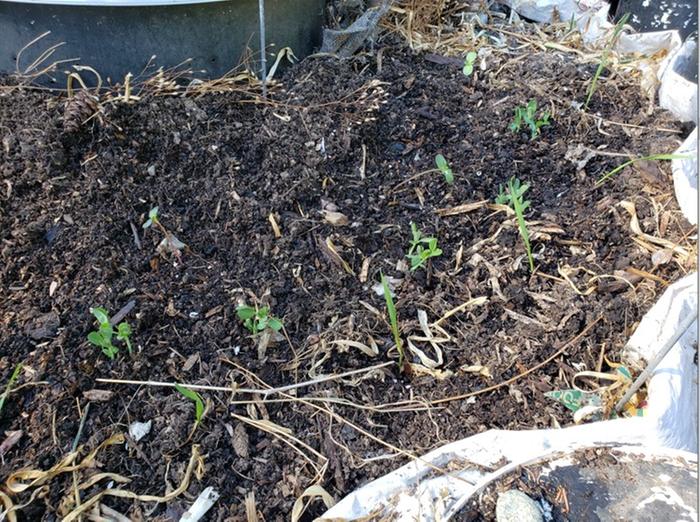
 7
7




"People get out your way, when you're on fire". Richard Prior
 2
2










 6
6




Ash Dalton wrote:... One thing I'd like to ask though is how this would go on top of sand? ... Would I need to alter the process at all to work with a sandy base? The drainage will be extremely good but I'm worried that this will result in water and nutrients leaching out of the beds sooner.
Thanks for your help.
"Also, just as you want men to do to you, do the same way to them" (Luke 6:31)
 2
2




 7
7











 8
8




 6
6




Visit Redhawk's soil series: https://permies.com/wiki/redhawk-soil
How permies.com works: https://permies.com/wiki/34193/permies-works-links-threads
 7
7











 11
11












 4
4




r ranson wrote:I'm leaning towards small perennials for this garden with the theory that they have deeper roots. To that end, I planted strawberries.
But they needed water, so I took my dye adventures outside and let the wool drip dry above the transplants.

 5
5




Visit Redhawk's soil series: https://permies.com/wiki/redhawk-soil
How permies.com works: https://permies.com/wiki/34193/permies-works-links-threads
 2
2




 4
4




r ranson wrote:I'm on a well and there have been a lot of housing ............
I call our farm experimental because we are trying lots of different methods to see what works in our changing climate. Some things like air wells have been a massive success.
 9
9











 3
3




r ranson wrote:Airwells are a great tool on the farm. I use a much simpler method than most, making a pile of rocks at least a foot high, at the base of any trees I transplant. It has a 90% success rate of surviving the summer without water as opposed to my 5% success rate without.











r ranson wrote:Airwells are a great tool on the farm. I use a much simpler method than most, making a pile of rocks at least a foot high, at the base of any trees I transplant. It has a 90% success rate of surviving the summer without water as opposed to my 5% success rate without.
 2
2











 11
11




.jpg)







 2
2




 4
4




I notice that your profile identifies you as living in San Antonio, Texas. A quick google found this site: https://weatherspark.com/y/7137/Average-Weather-in-San-Antonio-Texas-United-States-Year-RoundWhat I think we are over looking is combining this gardening method as a source for biogas energy.
Visit Redhawk's soil series: https://permies.com/wiki/redhawk-soil
How permies.com works: https://permies.com/wiki/34193/permies-works-links-threads
 4
4




 1
1










 1
1




Saralee Couchoud wrote:Don't call me an expert. An EX is a has been and a sPERT is a drip under pressure. And there are no failure, just learning experience. Some of us just take more of those experiences to learn
"Also, just as you want men to do to you, do the same way to them" (Luke 6:31)
 4
4











 7
7











 3
3





Visit Redhawk's soil series: https://permies.com/wiki/redhawk-soil
How permies.com works: https://permies.com/wiki/34193/permies-works-links-threads
 7
7







Visit Redhawk's soil series: https://permies.com/wiki/redhawk-soil
How permies.com works: https://permies.com/wiki/34193/permies-works-links-threads








Alas, our farm is a really funny shape and the garden space where the ARK2 bed lives is on a corner of the lot with 2 roads and no fencing. To get from there to the field where the animals are is quite the trek - 300 meters to the nearest shelter but there's also some steep areas in there. I do the trek to bring a garbage can of poopy bedding to the compost piles by the garden, but that's not a daily thing as most of our animals are in portable shelters.Denise Cares wrote: Have you thought about getting a small cart/wheelbarrow to pull your grey water buckets to where you need them?
Visit Redhawk's soil series: https://permies.com/wiki/redhawk-soil
How permies.com works: https://permies.com/wiki/34193/permies-works-links-threads

| I agree. Here's the link: http://stoves2.com |








